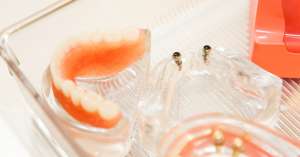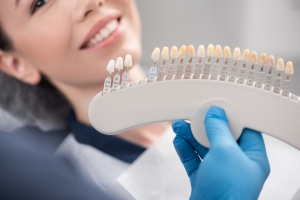Those pearly whites need to be showing off in the world with great confidence. It's an utter transformation that builds self-esteem and leaves positive impressions. However, several minor flaws in a tooth can make a person shy to show their smile. Chips and cracks, small gaps, discoloration, or even slightly misshapen teeth are usual problems that can steal the glimmer from an otherwise high-energy smile. For many, their first thought for a cosmetic fix would be orthodontic treatments or full-on veneers, yet there's a simpler, more versatile, and even more effective option: bonding. This minimally invasive technique offers a spectacular solution to a whole range of cosmetic problems, often with only a one-day appointment.
Bonding is a method that involves a resin material that is both durable and tooth-colored. Professionals apply it meticulously on the tooth surface, mold it into the desired shape, and then cure the resin by means of a special light. It treats a host of cosmetic issues and considers a few:
Chips and Cracks: Whether they occur due to an accidental fall or biting into something hard, dental bonding repairs minor chips and cracks very well. The resin fills in the area of damage, restoring the tooth to its original contour and integrity.
Gaps (Diastema): Small spaces between the teeth, especially between the two front teeth, can close up easily with dental bonding. This is a quicker and often less costly alternative to orthodontics for minor gaps that help create a more continuous and aesthetically pleasing smile line.
Discoloration: For discolorations that really won't respond to any kind of professional whitening, such as those secondary to medication or to a deep internal discoloration, dental bonding masks the imperfection by covering it with a bright resin that is custom-shaded.
Misshapen or Uneven Teeth: When a tooth is shorter than the one next to it, unevenly shaped, or even slightly misaligned, bonding can change its contours, size, and shape, thereby allowing a much more harmonious and symmetrical smile.
Exposed Roots: Sometimes, due to the recession of the gum line, tooth roots get exposed and become sensitive. Bonding can be placed over these areas to reduce sensitivity and improve the aesthetics of this gum line.
With the positive attributes it carries, dental bonding makes a very attractive option for all. For starters, it's a minimally invasive treatment procedure: unlike veneers or crowns, bonding materials may require little or no removal of healthy tooth enamel, hence saving the natural tooth structure-an excellent advantage. Secondly, bonding procedures are quick; mostly, the treatments need only one visit, making it the perfect solution if you want a fast cosmetic fix. Thirdly, the cost is less encouraging, especially when compared to other treatments such as porcelain veneers or crowns, so a bright smile is opened to a wider range of budgets. Last, the enhancements look very natural as the composite resin can be colored to match the natural looking color of your teeth so flawlessly with the naked eye.
The dental bonding process is quite simple and usually involves several important steps. It commences with a comprehensive consultation with your dentist regarding your aesthetic desires and to decide whether bonding is appropriate for your particular needs. Once decided that bonding is appropriate, the surfaces of the teeth are gently prepared for bonding by lightly etching it and rinsing off with water. A conditioner is applied to encourage a strong bond between the tooth and resin. Then the bond's color-matched resin is skillfully applied while shaped very carefully to attain the proper contour to fulfill the desired look for aesthetic correction with skillful precision. Afterward, it is hardened using a special light curing. The hardened material is then finished with trimming, shaping, and polishing to suit the treatment sites and give a natural feel.
It is essential to maintain oral hygiene for lots of years after your treatment with dental bonding so that it wears well. Brushing at least twice a day is necessary alongside flossing once, and, of course, you want to keep your regular check-ups and professional cleanings at the dentist. The resin material should not give you any problems as it is quite sturdy, although it is not as sturdy as natural tooth enamel. Within the very first days and weeks after the procedure, avoid biting into hard things like ice, pens, or fingernails if you can, and try to drink less of certain foods and drinks that could merely stain your teeth. Careful maintenance may allow dental bonding to keep looking good for years, granting your smile a functional and beautiful boost.
The key first step in locating the best cosmetic dentist in your area is to search for candidates who practice dental bonding. If you are in the GTA, the very first step you can take is through seeking a well-established Toronto dentist office. A competent specialist will help identify your specific needs, discuss all available options, and work out a customized treatment plan to get you onto a path toward an assured radiant smile.






